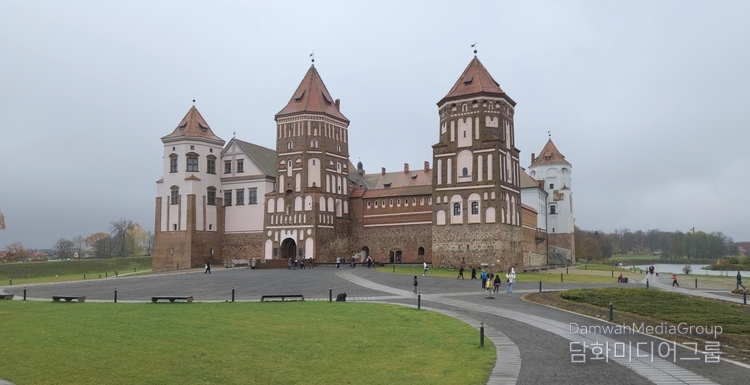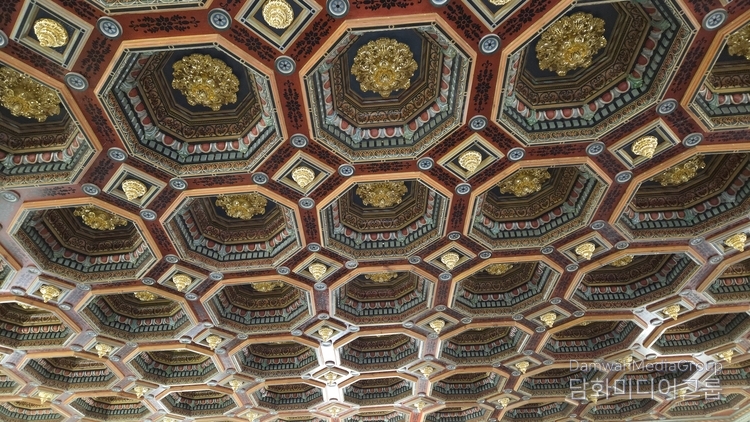Diplomacy Journal Belarus Correspondent Kim Sun-ah
A crossroads of Eastern and Western civilizations recognized as a UNESCO World Heritage Site
Located in the heart of Belarus, Mir Castle exudes a beauty reminiscent of a medieval legend.
With its red bricks, white decorations, and five majestic towers, its majestic and elegant appearance resembles a historical painting.

This is not just a building; it is a symbol of Belarus and a treasure trove of human culture, designated a UNESCO World Heritage Site. Traveling back in time, Mir Castle lives on today as a symbol of "peace" and "harmony."
A fortress built at the boundary of Eastern and Western cultures in the 16th century
Mir Castle was built in the early 16th century on the border between Eastern and Western Europe. At the time, this region held strategic importance, and the castle was a typical Gothic fortress, featuring thick walls and arrow-holed fortifications.
However, as the threat of war receded and peace returned, the owners transformed the castle into a Renaissance-style palace.
With the addition of arches, balconies, and gardens, Mir Castle gradually transformed into an artistic space where power and sophistication coexisted.

The Radziwill Family: Patrons of culture and arts
The castle's owners were the Radziwill family, one of the most influential noble families in Belarusian history.
They were a distinguished family known for their refinement and class, worthy of the title "Belarusian Nobles." They cherished and valued scholarship, art, and architecture. The Radziwill family invited artists and craftsmen from Italy, Germany, and Poland, turning Mir Castle into a cultural hub.
Music filled the air, plays and balls took place, and Mir established itself as a palace of art and culture, a place where Eastern and Western civilizations intersected.
A castle steeped in love and legend
There is no castle without legends. Mir Castle also has its own story, passed down through the ages.
Once upon a time, the castle lord's daughter fell in love with a poor knight, but class barriers prevented their relationship. When the knight died in battle, the grief-stricken maiden threw herself into the lake beside the castle.
Since then, her song can be heard over the lake on quiet nights, leading people to call it the "Lake of Love."
Another legend tells of the "Ghost of the White Lady" (Белая Дама). A woman dressed in white is said to appear in one of the castle's rooms, yet the people are unafraid.
They believe the "White Lady" brings good luck to those who believe in love and possess good hearts.
Secrets within and a revival of culture
The castle's inner courtyard resembles a small city. In the past, knights' tournaments and festivals were held there. The living quarters were located on the left, while the kitchen and armory were located on the right.
Legend has it that the old well in the center of the courtyard wasn't simply a water source, but the entrance to a secret underground passage. Indeed, archaeologists have reportedly discovered traces of the passage underground.
Today, Mir Castle has been reborn as a venue for exhibitions and concerts. On summer evenings, Baroque music fills the air, making visitors feel as if they've stepped back in time, centuries ago.
Chapel and memory: People live until they are remembered
Next to the castle stands a small chapel built in the early 20th century in the modernist style.
Decorated with delicate mosaics and stonework, it is the resting place of descendants of the Svyatopolk-Mirsky family.
Belarusians visit this chapel with a sense of reverence for their ancestors, much like a Korean family graveyard.
They say like this
"People live until they are remembered." This statement best captures the very reason for the existence of Mir Castle.
It is not simply a relic of the past, but a space where memory, respect, life, and culture continue.
The name "Mir": A symbol of peace
"Mir" means "peace," "harmony," and "rest" in Belarusian language. True to its name, Mir Castle is a symbol of peace, where strength and beauty coexist, and where history and culture become one.
In 2000, Mir Castle was designated a UNESCO World Heritage Site. This recognition was not simply a recognition of its architectural beauty, but a global recognition of the power of the human spirit and culture embedded within it.
However, today, Mir Castle stands as a bridge connecting past and present, a symbol of peace, art, and love that transcends the scars of war.
Time, flowing beneath its red brick walls, never stops, but the human dreams and stories embedded within it still live and breathe in our hearts.
Mir Castle, where history sings and love remains
As its name suggests, the spirit of peace and harmony resides in this castle.







